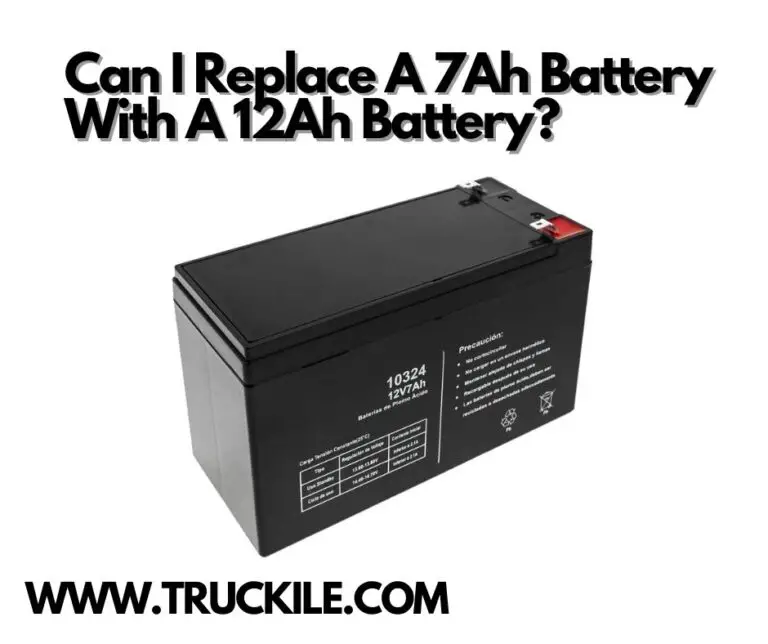Is 11.9 Volts A Good Battery?
As we’ll always say, it’s normal to want to make enquiries before going ahead to use a product. In this case, it’s the 11.9 volts — and you’re not sure if it’s a good battery; in this article, we’ll give you a response to the question — Is 11.9 Volts A Good Battery? — helping you to make that “buying” decision.
Without further words, let’s get started.
Is 11.9 Volts A Good Battery?
You must register it in your mind that the ideal car battery voltage with the engine running is between 13.7 and 14.7. When the engine is switched off, you should get a reading of 12.6 volts. If the battery isn’t fully charged, it will diminish to 12.4V at 75%, 12V when it’s only operating at 25%, and down to 11.9V when it’s completely discharged.
How To Tell If Your Battery Is Bad In 3 Easy Steps
If you find out that your battery is beginning to develop issues with producing electricity, chances are, it is a chemical issue.
How to test a battery:
Below are a few ways to test your battery at the comfort of your home, and determine if really it’s bad.
1. Inspect The Battery
There are times you can know whether your battery is bad or not by just having a good look. When it comes to inspecting, it’s not something you do without direction — you have to know the few areas to inspect, that’s why we’ve listed them for you:
- Discoloration
- Excessive leaking
- Crack or rupture of the plastic
- Bump or bulge in the case
- Broken terminal
It’s quite dangerous to have loose or broken terminals — and having such can bring about short circuit. What will show you that a short has actually occurred is, you’d see some indication of melting or burning. When a battery short circuits, every single bit of the power is instantly unloaded. That gives out a lot of heat, and sometimes causes an explosion. If the battery is still very much intact, but inside the case has a bulge, this is most times a result of being overcharged. There are other signs you can find in the case — signs such as physical openings. The physical openings, as a sign, are — most of the time — caused by mishandling.
Holes, splits, and cracks cannot be the reason why a battery stops working — but it’s necessary that one marks the battery as unsafe for security reasons. With wet-cell batteries, one has to maintain water levels. If you see that they’re low, usually using distilled water to refill them helps immensely. On the other hand, if the battery has stayed dry for a really long period of time, it is most likely to cause a problem. When the plates found in the cell get exposed to oxygen, it rapidly brings about the buildup of sulfation. Sulfation is known to be the leading cause of early battery failure. Also, take note that you’ll end up burning a dry battery if you try charging it.
If the cells of your battery contain plenty of liquid, but the color is brownish or dark, this also makes it to the list of indications of a bad battery. Even if only one of the cells is colored brown, it’s rendered useless and as a result, the entire battery becomes useless, too.
2. Take A Voltage Reading
A battery’s voltage remains a perfect way to be in the know of the state of charge.
Let’s look at a breakdown.
State of charge: 100%
Voltage: 12.7 – 13.2
State of charge: 75%
Voltage: 12.4
State of charge: 50%
Voltage: 12.2
State of charge: 25%
Voltage: 12.0
State of charge: Discharged
Voltage: 0 – 11.9
If you look at your battery and discover that it’s reading 0 volts, chances are that battery of yours experienced a short circuit. If you observe your battery and discover that it can’t go higher than 10.5 volts when you start charging, just know that the battery already has a dead cell. If you see that your battery is fully charged, according to what’s shown on the battery charger, but the voltage didn’t go above 12.4, have it in mind that your battery is sulfated.
In case you don’t know what sulfation is, it’s known as the natural byproduct whenever the battery itself discharges. Naturally, going ahead to charge the battery again will reverse the sulfation crystals and transform it back into electrolyte — very much ready to begin the production of power again. In contrast, if a battery is uncharged, sat, severely discharged, or/and drained for a period of time [extended period of time], in terms of size, the sulfation will increase — and it’ll harden onto the plates. This covers the plates’ surface area, removing all of the chemicals that are needed to produce power.
There’s something sulfation does, it decreases the “reaching fully charged” potentials of the battery. Also, it self-discharges the battery faster than normal. Trying to charge a sulfated battery is similar to trying to wash your two hands while having gloves on. At this point, you’re not assured of having your battery restored to a healthy condition if all you do is charge. This stands as the reason most persons go into the market in search of a battery as a replacement — when the original one hits this point.
3. Load Test The Battery
You can visit a local automotive shop close to you and request that they load test your battery for you — although it’s something you can sit at home and do effortlessly. What you need to perform this load test is a digital voltmeter. For you to have an accurate road test, you must ensure that the battery is fully charged. Let’s take, for example, a motorcycle battery:
- Take out the seat, and then, the next thing to do would be to expose the battery in your bike just so you have direct access to the terminals. Make sure you, at this point, don’t connect disconnect the battery — because you’ll have to attempt to start the bike.
- Hold the prongs of your voltmeter and place them correctly to the terminals — on the correct terminals — on the battery.
- Now, it’s time to locate the start button and push it, and watch the level to which the voltage drops. It does not really matter if you see the bike start or if it doesn’t — what matters is the voltage reading.
As for a healthy 12-volt motorcycle battery, it should maintain volts from a range of 9.5 to 10.5 under the load — lasting for a timeframe of 10 seconds straight. If the battery starts to hold and after that, drops steadily in voltage, then have it in mind that there’s a problem. If you see the voltage drop all the way to 0 volts, it’s also a sign that there’s a problem. What we call this is an open cell. On a brand new battery, you can notice a result of manufacturing flaws, but also, it may be that way as a result of sulfate crystal buildup. Under the load’s intense heat, one or even more of the weld pieces that connect the cells is coming loose or even connecting. This will end up cutting the current, which will result in a drop in the voltage.
When we can say the battery has cooled off, the pieces will touch, which will barely give a total connection. With this, what you get is a false voltage reading. Batteries that have open cells may have the “fully charged” reading when idle, but under a load test, they fail every single time. Once you discover that a battery has reached this point, there’ll be no point trying to look for a remedy for it — because there’s no going back. The best option that you can opt for is “recycle.”
Frequently Asked Questions (FAQs)
Is 11.9 Battery Voltage Good?
The 11.9 voltage mark indicates that the battery is discharged entirely. Anything that’s under 12.2 voltage means that the battery is in a state of discharge, and a healthy battery should show 12.6v in a static state. Yours needs to be replaced. 11.9v indicates the battery is completely discharged.
How Many Volts A Good Battery Should Have?
12.6V volts or above – Your battery is healthy and fully charged. No further action is required. 12.5 volts – Your battery is at a healthy state of charge, but we’d recommend re-checking it within a few days to ensure the voltage hasn’t dropped any further.
How Many Volts Should A Battery Drop Overnight?
The voltage will drop with the headlight load, but no more than maybe 1 V. If it’s a new battery with a good charging system 12.8 to 12.6 is what you should expect. The problem is in order to save fuel a lot of charging systems only charge your battery 80% to save fuel.
Is 11.9 Volts A Good Battery – Conclusion
As a recap of the response we gave to the question — Is 11.9 Volts A Good Battery? — we stated that:
You must register it in your mind that the ideal car battery voltage with the engine running is between 13.7 and 14.7. When the engine is switched off, you should get a reading of 12.6 volts. If the battery isn’t fully charged, it will diminish to 12.4V at 75%, 12V when it’s only operating at 25%, and down to 11.9V when it’s completely discharged.
Thanks for reading.

Joe lives and breathes cars and trucks. After many years working in the Auto industry, he decided that it is only right to share his knowledge with the public. As a qualified expert in trucks and cars, he started working for Truckile.com and is the main editor and publisher.



